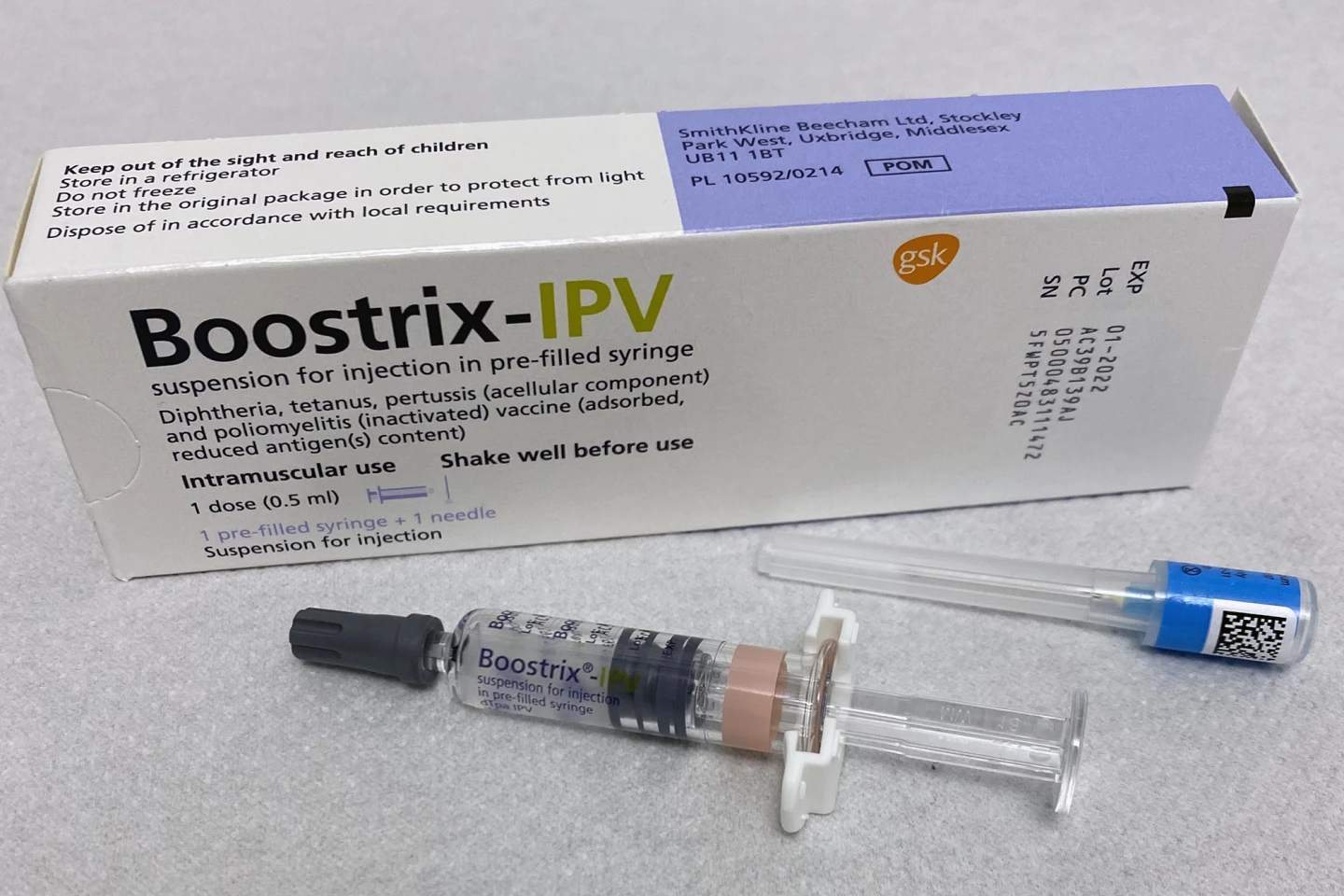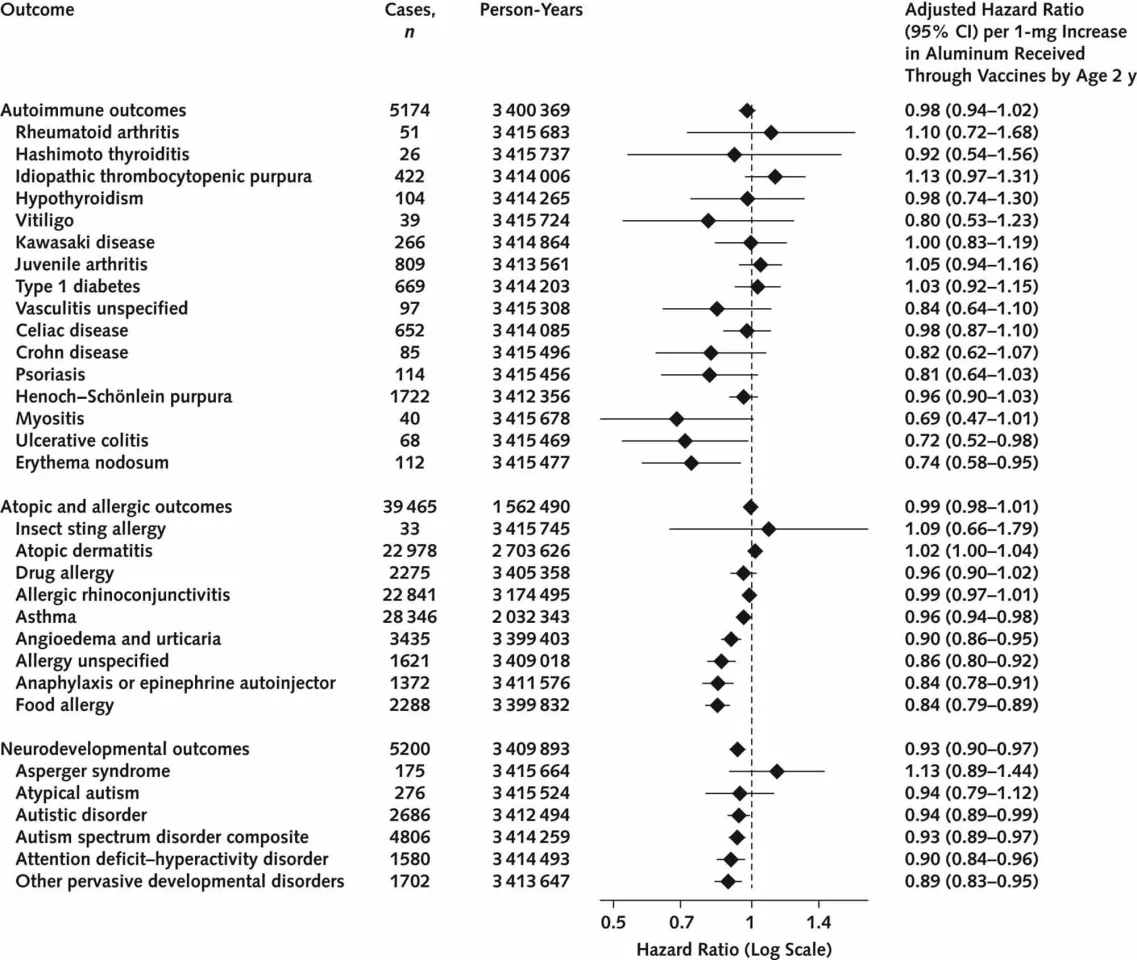A massive study of over 1.2 million children has found no link between aluminum-containing vaccines and 50 chronic childhood conditions, including autism, ADHD, asthma, and diabetes, delivering a reassuring message about vaccine safety.
While childhood vaccination has been hailed as a global success story, keeping us safe from disease by building protection using the body’s immune system, there are sceptics. Vaccine hesitancy has risen in some countries due to a variety of factors, including a belief that vaccines contribute to other health conditions.
A large new study led by researchers at Statens Serum Institut (SSI), under the auspices of Denmark’s Ministry of Health, has investigated if aluminum-containing childhood vaccines are associated with an increased risk of developing 50 different conditions, including autism, ADHD, asthma, and type 1 diabetes.
“Our results are reassuring,” said Professor Anders Hviid, head of SSI’s Department of Epidemiological Research and the study’s senior author. “By analyzing data from more than one million Danish children, we found absolutely no indication that the very small amount of aluminum used in the childhood vaccination program increases the risk of 50 different health outcomes during childhood.”

Aluminum salts are commonly used in non-live vaccines as an adjuvant, a substance that stimulates the immune system to make it more reactive to the vaccine’s antigen, which can result in a stronger, longer-lasting immune response. Vaccines are referred to as “non-live” if they contain killed or inactive versions of viruses or bacteria. They’re designed to produce an immune response without causing the actual disease. Despite being used in vaccines since the 1930s, there has been ongoing concern about the potential toxicity of aluminum, especially over the long term.
Since 1997, the Danish childhood vaccination program has offered (that is, not mandated) an aluminum-containing vaccine for diphtheria, tetanus, pertussis (whooping cough), polio, and Haemophilus influenzae type b (Hib) disease as a combined vaccine (DTaP-IPV/Hib) at three months, five months, and 12 months. The pneumococcal disease vaccine (PCV) is also administered alongside the DTaP-IPV/Hib vaccines. The first measles, mumps, and rubella (MMR) vaccine is typically given at 15 months, with a second dose given at age four.
For the present study, the researchers used health and vaccination data from national registries, covering 1,224,176 children born between 1997 and 2018. Children were included if they were born in Denmark, were alive and still living in the country at age two, and didn’t have certain congenital or pre-existing conditions, including respiratory conditions, heart or liver failure. They obtained data on the timing, number, and types of vaccines administered to each child and calculated the total aluminum exposure from all childhood vaccines received by age two. The total aluminum received from vaccines ranged from 0 to 4.5 mg,
Fifty chronic disorders were tracked from ages two to five (and, in some analyses, up to age eight). These comprised 36 autoimmune disorders (including type 1 diabetes and juvenile arthritis), nine atopic or allergic disorders (including asthma, eczema and allergy), and five neurodevelopmental disorders (including autism spectrum disorder and ADHD). The researchers used statistical models to estimate the risk of developing each disorder per 1-mg increase in aluminum exposure, adjusted for many confounding factors such as birthweight, maternal smoking, and income.
They found that there was no increased risk of any autoimmune, allergic, or neurodevelopmental disorders with higher aluminum exposure. In fact, for neurodevelopmental conditions, the results suggested a slightly lower risk. Asthma was also slightly less common with more aluminum exposure.
“This is the first study of this scale and with such comprehensive analyses, and it confirms the strong safety profile of the vaccines we’ve used for decades in Denmark,” Hviid said.

But can these findings be applied to other countries such as the US, the UK and Australia? Yes, but with caveats. The types of vaccines used in Denmark are similar to those used in the US, the UK and Australia, including their use of aluminum as an adjuvant. The total aluminum exposure range seen in the present study is comparable to what children receive in other countries, and the vaccination schedules are broadly similar in terms of timing and formulation. However, some vaccine brands or formulations may differ slightly between countries. Additionally, Denmark’s universal healthcare system and high vaccine uptake may reduce confounding variables more effectively than in countries with lower or more variable vaccination rates.
The bottom line is this: the results of the present study are highly relevant to Australia, the UK and the US, but should be interpreted alongside local data, like the US-based Vaccine Safety Datalink (VSD) study, which showed a possible link between aluminum in vaccines and persistent childhood asthma, though with confounding concerns.
The present study has limitations. For some conditions, especially those that start later in life, the short follow-up may have been problematic, while for some rarer conditions, the number of cases was too small to draw firm conclusions on. And aluminum exposure was based on known vaccine content, not measured directly in the children.
Nonetheless, this large, well-controlled study provides a strong counterpoint to earlier concerns raised by small studies or ecological data about aluminum safety. And it supports the continued use of aluminum-containing vaccines in childhood immunization programs.
“In an era marked by widespread misinformation about vaccines, it is crucial to rely on solid scientific evidence,” said Hviid. “Large, population-based register studies like this one – tracking more than a million children over many years – is a bulwark against the politicization of health science which undermines public trust in vaccines. It is absolutely essential to distinguish real science from politically motivated campaigns – otherwise, it is the children who will end up paying the price.”
The study was published in the journal Annals of Internal Medicine.
Source: Statens Serum Institut







